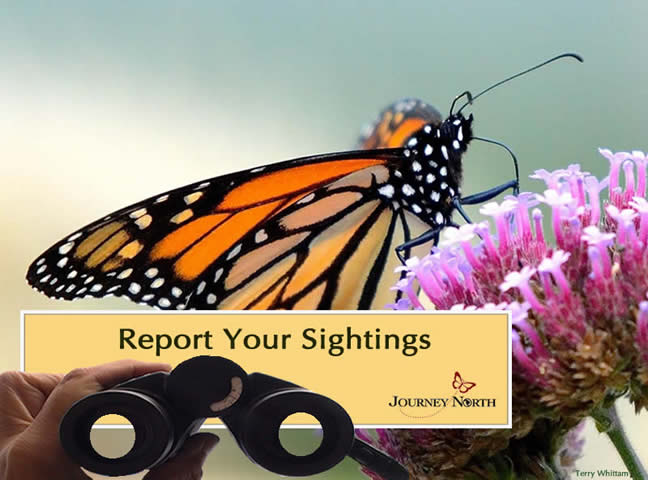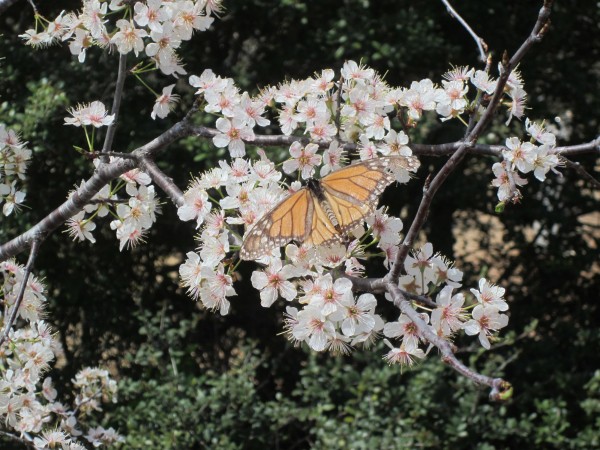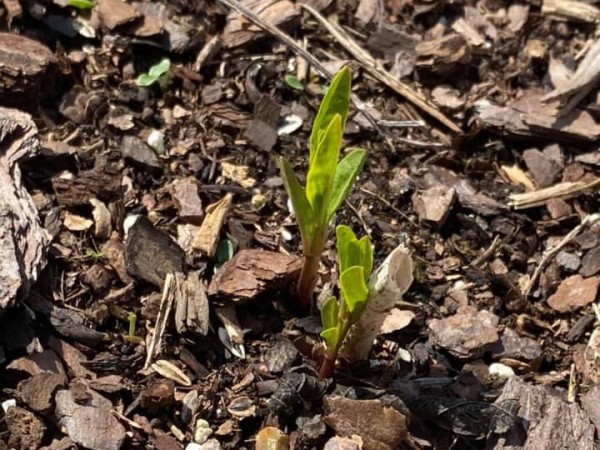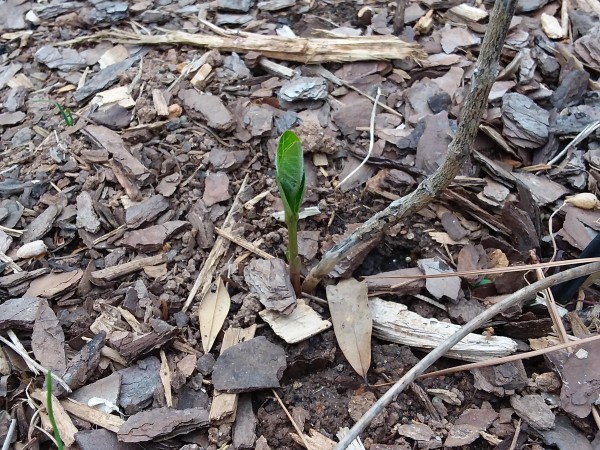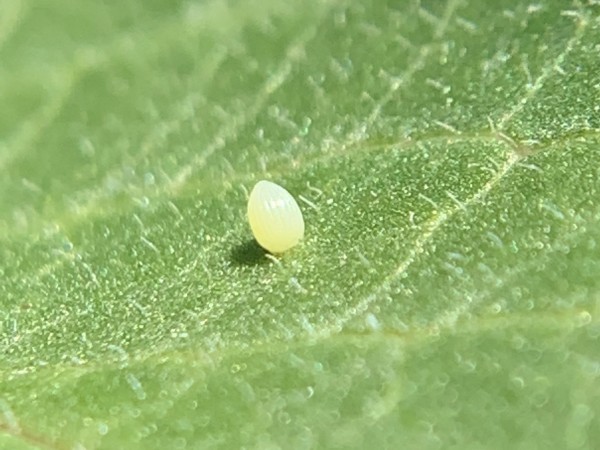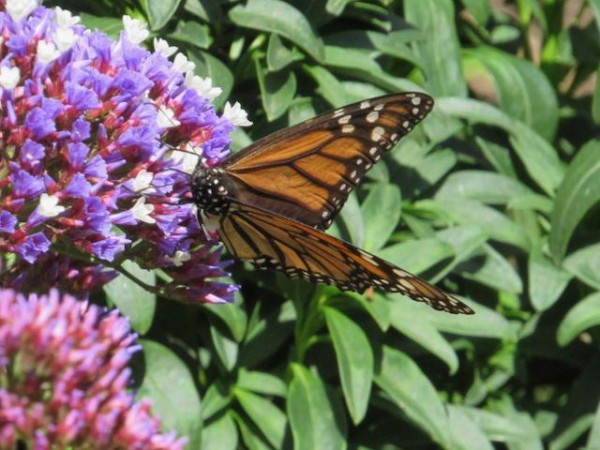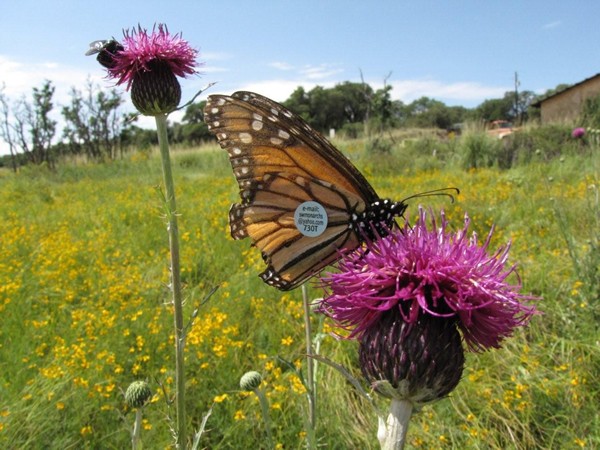Monarch Migration Gaining Momentum
In Mexico, Estela Romero reports on the remaining colony in La Salud. Texas remains a migration hotspot and more reports are coming in from Oklahoma and Arkansas. And out West, Gail Morris provides an update on monarchs in California and Arizona.
Eastern Monarch Population
Letter From Estela Romero: The Countdown
In Mexico, Estela Romero provides an update on the El Rosario monarch colony that relocated to La Salud. The migration north is occurring and it is only a matter of time before the remaining monarchs depart. Estela writes, "Migration has gradually been happening for a few weeks. It’s slow — and even pauses at times — but sudden bursts can occur. Every few days these bursts release hundreds and hundreds of monarchs per minute . . . Here in Mexico, the countdown continues. Gratitude fills the air as we prepare to wish the remaining monarchs a heartfelt farewell."
Read more of Estela Romero's Letter: The Countdown
Leer más de la carta de Estela Romero: La Cuenta Regresiva
Migrating Monarchs
Journey North observers in Texas are noticing monarchs with worn and tattered wings, an indication of migratory behavior.
Mary in Boerne, TX: "First faded monarch of the year flying over my vegetable garden." (03/19/2021)
Susan in Austin, TX: "I saw this faded and tattered male Monarch at the Ladybird Johnson Wildflower Center today." (03/21/2021)
The leading edge of migration is still concentrated in Oklahoma and Arkansas. Where will monarchs be next week? Explore maps from previous years to compare data.
Anita in Washington, AR: "Counted 15 monarchs at Rick Evans Grandview Prairie on March 20th. Photographed two females laying eggs and some males feeding on henbit growing along the roadways. Milkweed is so small the females had to go to the ground to be able to lay an egg. Weather is beginning to warm up so that should help." (03/20/2021)
Lara in Bixby, OK: " [Monarch] flew by while I was walking on a trail." (03/20/2021)
Milkweed, Eggs and Caterpillars
There is still concern about the impact of February's deep freeze on milkweed growth in Texas. The good news is there has been an uptick in reports of emerging milkweed, including farther north in Oklahoma and farther east in Georgia. But is milkweed growing fast enough to keep up with the pace of migration? And will there be enough milkweed ready for migrating monarchs to lay eggs?
Patrick in Rockport, TX: "A. viridis sighted - seems plants are emerging late after the February Big Freeze." (03/19/2021)
Anita in Sand Springs, OK: "Native swamp milkweed starting to come up in the raised bed garden." (03/20/2021)
Tuy in Marietta, GA: "Purple milkweed is about 1 inch tall now." (03/21/2021)
Based on recent reports of eggs, at least some monarchs are finding sufficient milkweed.
Roberto in San Benito, TX: "Two adult monarchs kept landing on milkweeds in backyard. Went to one plant and found three eggs. We have probably 30 milkweeds in backyard and these monarchs were landing on many." (03/18/2021)
And in turn, some of these eggs have already reached the next stage of development:
Christi in College Station, TX: "First larva has emerged." (03/18/2021)
Western Monarch Population
Letter from Gail Morris: Western Monarch Spring Report #4
Out West, Gail Morris details a slow week for migration. But a more favorable forecast on the horizon should increase activity. Gail writes, "Rapidly changing Spring weather buffeted the California coast and Southwest deserts this week limiting monarchs from expanding their range. Unlike the eastern range of monarchs that has already raced through Texas and is now in Oklahoma, monarchs in the West remain in the safety of the warmer California coast and southern deserts of Arizona. But warmer and drier weather is in the forecast so look for monarchs to be on the move in the upcoming week."
Read more of Gail Morris’ Letter: Western Monarch Spring Report #4
Report Your Observations and Include Photos
As migration gains momentum, remember to report your monarch observations to Journey North. If possible, please include photos in your reports. Photos provide indicators such as wing condition to help determine if a monarch is migratory or not. However, monarchs are not always cooperative subjects. One potential workaround is to take a video and then extract a screenshot to use as a photo. Learn more in the tutorials below:
And please make sure your photo is properly rotated before submitting.


